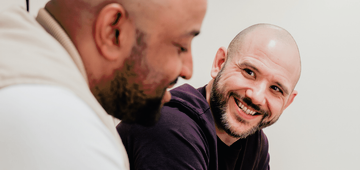
Dr Ann Hagell, Research Lead at the Association for Young People’s Health, unpicks what we really mean by a public health approach to serious youth violence.
What is a public health approach?
There has been much talk recently about taking a public health approach to serious youth violence. Concern over youth knife crime has risen, and people are interested in the successes of the public health approach of the Scottish Violence Reduction Unit set up in Glasgow in 2005. But what do we really mean? And how do we do it?
The superficial appeal of a public health approach is that it does not sound unduly punitive. It seems more appropriate when we are talking about children and young people. There’s a widespread appreciation that the lines between perpetrators and victims are muddled, and that violence is part of deeper seated problems. Public health offers something that sounds more holistic and fair.
This is all good, but what is less good is the muddle about what a public approach actually means. This is no cheap, easy option. Public health is a rigorous discipline, with a rather different world view from the individual responsibility model that tends to frame criminal justice interventions. At its simplest level it means everything to do with health that isn’t dealt with by hospitals and clinical health interventions. This usually means that the emphasis is on prevention.
But it also means an approach that focuses on populations, not high risk individuals. It is not about curing individuals, it is about improving average population health – resulting in the maximum benefit to the most people. Individuals benefit. Importantly, the approach does not usually start with the individual.
Using minimum pricing to reduce average alcohol consumption is a good example. The thinking goes that if average consumption comes down, so too will the number of problem drinkers in the population. But we’re not specifically targeting the problem drinkers with the pricing intervention. We’re changing the underlying relationship of society to alcohol.
So where does this leave us with youth knife crime?
The first step in public health is to be absolutely sure what it is you are targeting. What are we trying to achieve? We need to be much clearer about this before deciding which interventions to use – is it reducing the use of weapons? Reducing knife injuries, or knife deaths? Reducing trauma for everyone involved? Among which age group exactly? Whichever outcome we focus on, it is clear that youth knife crime is related to a wide range of underlying factors such as deprivation, so we need good information about what these factors are and how we are going to measure them too.
The actions this approach leads us to include:
- Primary prevention: This is at the heart of public health. In the case of youth knife crime it might include reducing access to weapons, helping with alcohol and drug misuse, raising awareness in schools, offering purposeful activities for young people, controlling media reporting, and tackling material deprivation and income inequality among the age group.
- Secondary prevention: This means trying to stop people drifting into the high-risk category, by intervening with those already involved in risky lifestyles, reducing school exclusions, or focusing mental health work on marginalised young men
- Tertiary prevention: By definition this means intervening after the problem has manifested itself, and so this is not classic public health. But it is part of a continuum of services that we need to offer. It includes, for example, hospital-based violence reduction programmes that pick up young people in Accident and Emergency after they have been stabbed.
We can’t do any of this effectively without actually involving young people. Public health is strong on community involvement and user voice. And we shouldn’t do any of it without good research evidence that it will work. However here we have our hands tied a bit. Many of the interventions that seem so sensible with this age group are very difficult to evaluate. Research evidence is lacking, and where we do have data effect sizes tend to be rather small.
So we need to get more sophisticated about the kind of evidence we need and how we interpret it. Policy makers and commissioners can find this very frustrating. But this is not a reason to do nothing.
What next?
Public health is not new. None of this is rocket science. It doesn’t represent a new miracle cure. Lots of people have been doing it for years, all across the country. But we do need to invest in it. None of this will work unless we put funding into it. Public health funding for services to young people have been particularly hard hit in recent years. It is something that needs to be done actively, not passively.
Public health isn’t something that just happens in the background. It is a set of positive interventions that need trained staff and good data. We would argue that this is particularly the case when working with young people in the transition to adulthood – say 16-24 year olds. Understanding that transition is critical to getting interventions right.
This blog is based on a briefing paper Dr Hagell wrote for children’s charity Coram, in preparation for an event they hosted in September this year bringing together over 100 young people, campaigners, professionals and staff to share ideas and expertise to find solutions to combating youth knife crime.



